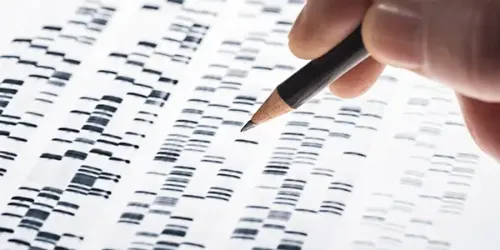Muscular dystrophies and myopathies
"The prognosis is extremely variable, depending on the type of dystrophy suffered".
DR. VICENTE GAJATE
SPECIALIST. NEUROLOGY DEPARTMENT

Within the pathologies of striated muscle (the muscle associated with our skeleton that allows our movements) a large number of entities are included.
Muscular dystrophies are a group of pathologies of genetic origin that have in common the progressive destruction of the muscle and its replacement by fat or fibrotic (scar) tissue.
When we speak of myopathy, we simply say that there is some alteration in the muscle itself. Within myopathies we have multiple causes, from viral infections, toxic, autoimmune, and genetic (congenital, metabolic, mitochondrial myopathies).

What are the symptoms of muscular dystrophy?
The symptom is usually muscle weakness; however, depending on the type of pathology, the weakness has a specific pattern of involvement. There are diseases that can affect all muscles in a similar way, such as immune or toxic myopathies; and others that have a typical pattern of weakness and features that allow clinically differentiating one pathology from another. For example, the distribution of facioscapulohumero-(peroneal) weakness is often seen among others in facioscapulohumeral dystrophy (FSHD).
A feeling of general weakness should not be confused with a loss of muscle strength, which can be seen on examination and is often found in muscle pathologies.
The most common symptoms are:
- Muscle weakness.
- Muscle atrophy.
- Articular limitations.
- Tendon retractions.
Do you have any of these symptoms?
You may have muscular dystrophy
What are the causes of muscular dystrophy?
Muscular dystrophies are due to genetic defects that cause some muscle protein to be defective or not to be produced in the required amount. This causes muscle tissue to degenerate and be replaced by fibrous tissues unable to perform normal muscle function.
In some, not only the diseased muscle, but also other tissues, such as the heart or brain. In many of them, the genetic defects are identified and the inheritance pattern is known. In spite of being genetic diseases, in a wide group of them, affected relatives are not identified, since they are caused by spontaneous mutations, not present in them. Some depend on the sex of the individual.
What is the prognosis for muscular dystrophy?
The prognosis varies according to the type of muscular dystrophy and the speed of evolution. Some types are mild and evolve very slowly, resulting in a normal life expectancy, while others are more severe and cause functional disability and loss of ambulation.
Life expectancy may depend on the degree of muscle weakness and any respiratory or cardiac complications.
How is muscular dystrophy diagnosed?

First of all, clinically, it is necessary to determine whether there is muscle weakness and the type of pattern it follows. Complementary tests are also important, such as analytical tests to quantify CK (muscle damage enzyme), specific tests such as the forearm ischemia test (useful in the study of muscle metabolism diseases).
Muscle MRI also provides information on the pattern of muscle involvement, i.e., which muscles are most affected, guiding the diagnosis. EMG helps in the differential diagnosis, excluding causes, and to identify if there is myopathic (i.e. muscle) involvement.
Finally, special autoimmune determinations, genetic studies and muscle biopsy may be necessary.
How is muscular dystrophy treated?
The treatment will depend on the cause. At present, many of the genetic affections have no treatment, but others, such as Pompe disease, do have a specific treatment.
Regarding the other causes, immune-mediated diseases may require inmosuppressive treatment. In others, such as statin toxicity (medication used to lower cholesterol), it may be sufficient to remove the causative agent.
Where do we treat them?
IN NAVARRE AND MADRID
The Department of Neurology
of the Clínica Universidad de Navarra
The Neurology Department has extensive experience in the diagnosis and multidisciplinary treatment of neurological diseases.
We offer a diagnosis in less than 72 hours, along with a proposal for personalized treatment and post-consultation follow-up of the patient by our specialized nursing team.
We have the most advanced technology for an accurate diagnosis with cutting-edge equipment such as HIFU, deep brain stimulation devices, video EEG, PET and epilepsy surgery, among others.

Why at the Clinica?
- State-of-the-art diagnostic assistance with great work in research and teaching.
- Specialized nursing team.
- We work together with the Sleep Unit.

















